Everyone wants a thick, green, and healthy lawn. It’s the perfect way to show-off to neighbors, a great place for a picnic, and a safe place for children to land if they fall in the yard.
However, if you want a lawn that turns neighbors green with envy, you need the knowledge and knowhow to do it right. Otherwise, it can take longer, cost more, and be way more work than it needs to be.
If you want the best lawn in the neighborhood, you need a maintenance plan that can simplify upkeep. A major part of this plan should involve overseeding, which will help keep your lawn in tip-top shape without requiring you to dig up the grass anytime it thins out.
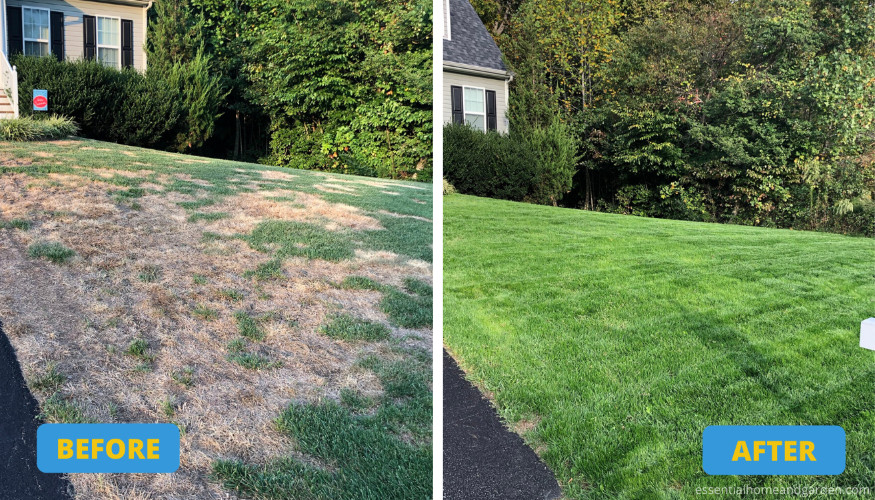
Ready to learn how to work smarter, not harder?
Keep reading to discover what you need to know to help your lawn look its best.
What is Overseeding?
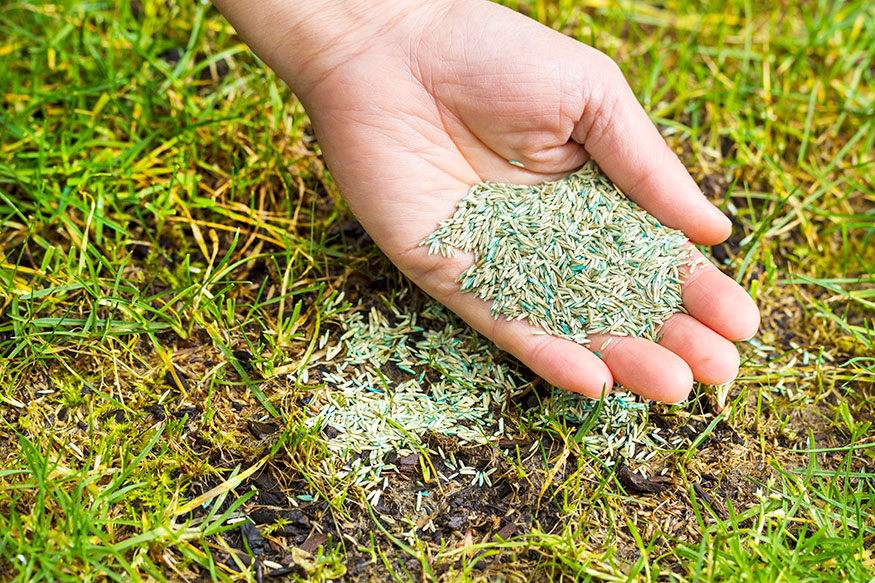
Overseeding involves planting grass seed into an existing lawn without ripping the lawn apart in the process. It requires less work than totally reseeding or uprooting existing grass, allowing you to improve and maintain your lawn more easily.
Benefits of Overseeding
From improving the look of your grass to making it stronger, overseeding is a simple process that provides major benefits to the health of your lawn. These benefits include:
Patching Bare Spots
Do you have spots in your lawn that just won’t cooperate? Whether a pool killed your grass, your pet soiled it, or the grass just doesn’t grow how you want it to, you can use overseeding to patch it. Filling in the thin spots will give you a fuller, more complete, and uniform lawn that will make neighbors jealous.
Increasing Thickness
Even if you don’t have any bare spots, overseeding can still improve the thickness of your lawn overall. Instead of spot-treating, an overall coat of overseeding can fill in spots you may not even see, leading to denser grass.
Improving Resilience
If you live somewhere with drastic weather changes throughout the year, it may be worth reseeding your lawn with a different kind of grass. When integrated together on a lawn, multiple grass types can form a more complete and resilient lawn. A cool-season or warm-season grass added to the opposite can help prepare your lawn for a change in temperature, avoiding browning and keeping things looking good for longer. Plus, it’ll create a unique color combination for your yard.
No matter what your reason, overseeding is a lawn care technique that can help improve the health and look of your yard.
Before You Start
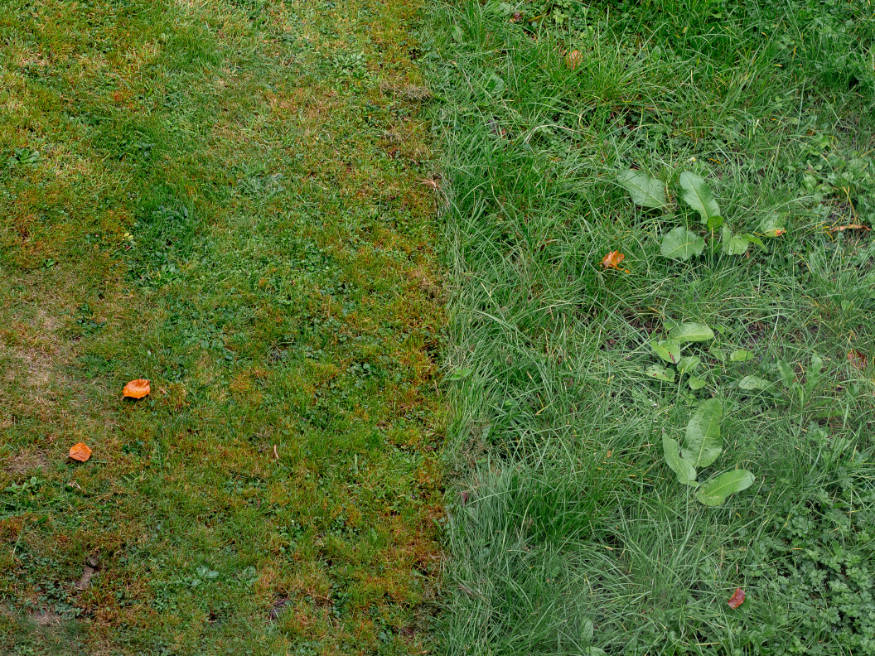
While overseeding will help bring your lawn back to its best, if there are underlying problems causing bare spots or poor growth, it’s only bandaging the wound.
You need to get to the “root” of the problem and address it first so that you don’t spend the whole year overseeding the same spots.
Causes of patchiness or uneven growth include:
Water Imbalance
Both too much and not enough water can be reasons why some parts of your yard don’t grow evenly. Changes in terrain can lead to problems with drainage, which can essentially drown your grass in that area. To fix this, you may need to do some landscaping to even things out.
Alternatively, if there is a part of your yard that isn’t reached by your sprinkler system or hose, the lack of water can cause patchiness or discoloration as well. Monitor your watering system to see if something is being ignored.
Poor Soil Condition
While the conditions required to grow depend on the grass you use, poor soil conditions can make any lawn suffer. Rockier soils may lack the required nutrients to provide nutrition to the grass, and compacted soil can suffer from a lack of airflow, stunting growth. Consider using a fertilizer (or adding fertilized soil) to areas that lack nutrients and aerate your lawn to get air flowing and keep your grass fed.
Too Much or Not Enough Sunlight
Just like people, the grass in your lawn needs the right amount of sunlight. Too little sun and they may be unable to get the resources they need to grow, and too much may overheat the blades of grass and kill it entirely. Ensure there is nothing blocking the sun where your patchiness occurs, and if it’s especially hot out, consider watering more or overseeding with more resilient grass types.
Still Not Sure?
Get in a local lawncare expert to find the exact cause of your poor lawn condition
When to Overseed
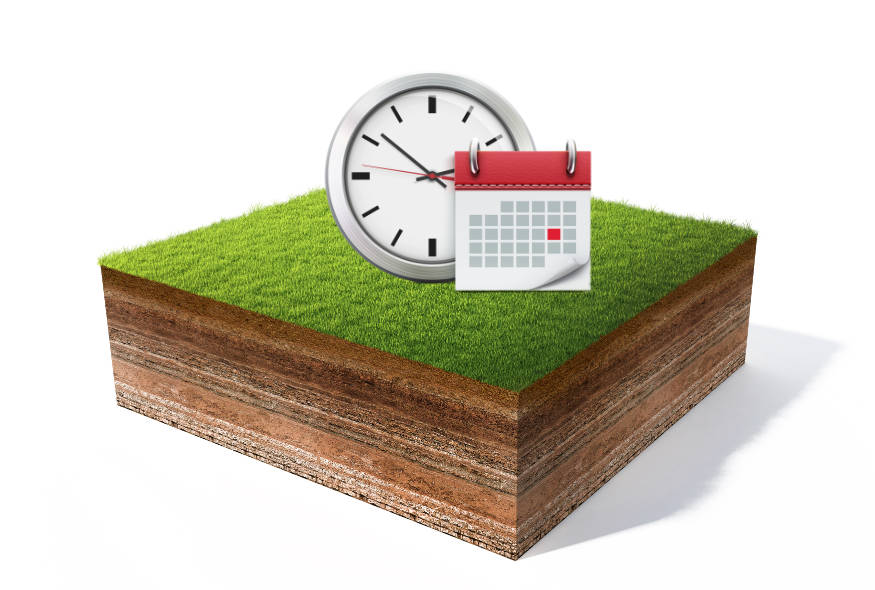
Perhaps just as important as how to overseed is when to overseed.
Do it at the wrong time and you may not see the results you’re hoping for. But, if you time it correctly, you can enjoy the restorative benefits for the rest of the season (and hopefully the whole year).
Late spring is a tempting time to overseed for all types of grass because spring and summer are where the weather is nice and lawns are on display. However, the heat can also be stressful on the growing grass, which makes it harder for it to grow lush and green. Similarly, harsh winter weather can make it hard on young grass, so planting too close to winter weather can be inefficient as well.
Instead, the right time to overseed your lawn depends on the type of grass you’re overseeding. This way, you can ensure that the weather conditions are suitable for growth.
Cool-Season Grasses
Cool-season grasses thrive when it is cooler out, but not when it is too cold. While they stand a better chance in winter conditions than their warmer alternatives, it’s best for them to be fully matured by then so they can better survive.
Cool-season grasses should be planted towards the tail-end of summer or early fall, when the temperature is starting to lower and the harsh sunlight weakens.
As the grass grows in the warmed soil, the cool fall air will prevent them from overheating in the sun. This way, they can grow in favorable conditions that hopefully prepare them for colder days in winter.
Warm-Season Grasses
Warm-season grasses enjoy warmer temperatures than cool-season grasses. However, not every warm-season grass excels in summer heat, so it is best that they are mature before the summer sun beats down on them.
It is best to plant warm-season grasses in the late winter or very early spring (as long as the ground has recovered from winter conditions). This allows them to grow during the entire spring, enjoying mild temperatures before the summer begins.
What You Will Need
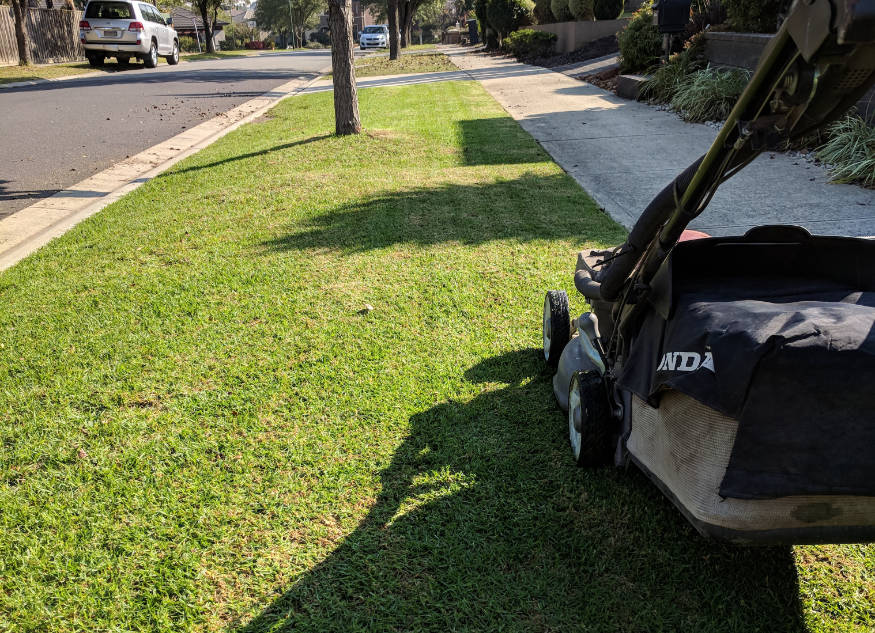
While overseeding isn’t an overly complex task, it can be time consuming to do manually without the right tools. This is especially true if you have a large yard that will require a lot of seed and fertilizer spreading, or if you plan to do the entire lawn instead of just spot-treating with overseeding.
To successfully overseed your lawn, you should have:
- Mower
- Metal Rake
- Quality Soil
- Grass Seed
- Fertilizer
- Seed/Fertilizer Spreader
Step By Step Instruction
Step 1 – Mow Your Lawn
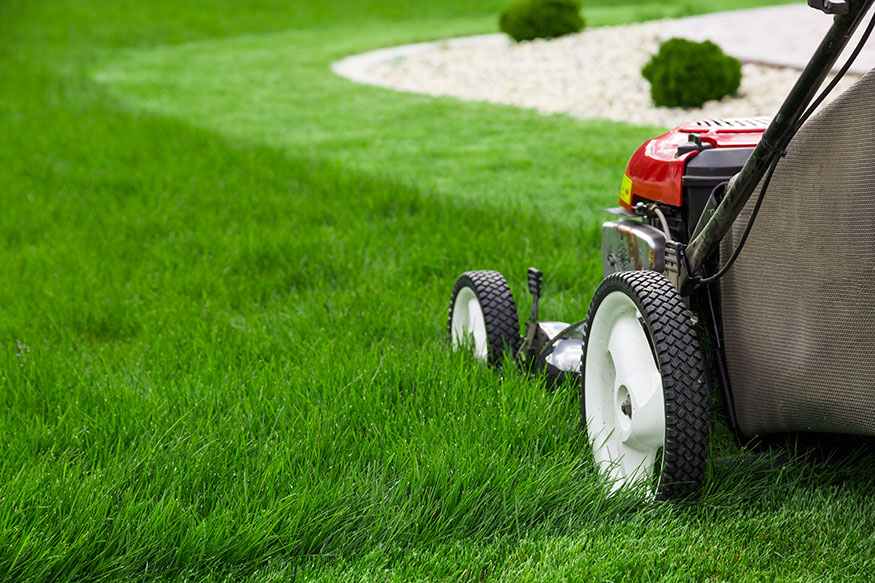
The first step to overseeding your lawn is to mow it. You’re preparing it to be ready to take the seed and soil you’re adding later on. If the grass is long and unmanaged, it can be hard to get seeds into the ground to germinate.
By cutting the grass to the lowest setting possible, you can make it easier for the seeds you’re spreading to reach the soil without extra effort. This is especially helpful when you’re using a seed spreader that simply drops seeds onto the grass, which allows long grass to interfere and mess up your dispersal.
Step 2 – Clean Up and Bag Clippings
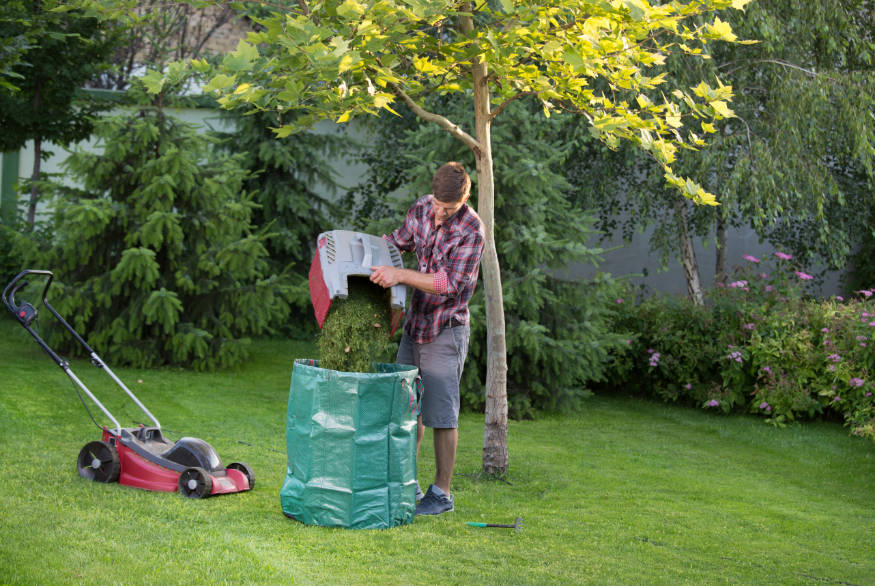
While it can be incredibly beneficial to leave lawn clippings on your lawn to harness the nitrate produced, we want to be sure we clean it up before overseeding. This is because the existing grass clippings and any thatch that is on your lawn is preventing seeds from reaching the soil.
After mowing, clean up the clippings and anything else on top of your grass. The clippings can be saved for later or used on a piece of lawn that isn’t being overseeded.
Step 3 – Loosen Turf with a Rake
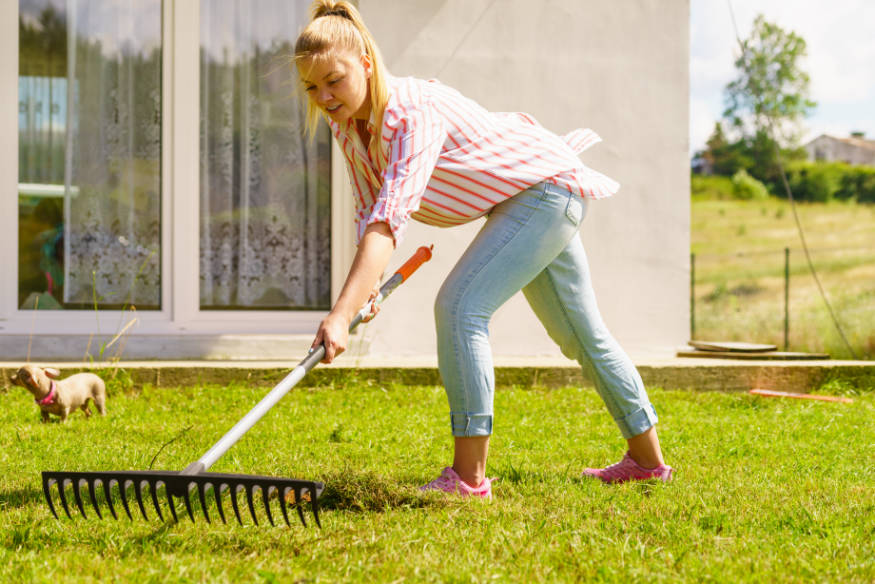
For the best chances at your grass seed taking hold in your soil, it helps to loosen the turf with a rake before using the seed spreader. Compacted turf is less likely to absorb the seed and germinate because it struggles to reach the soil under the turf.
This can also help improve air circulation to the soil, helping the new grass to grow.
Step 4 – Add a Light Soil Layer
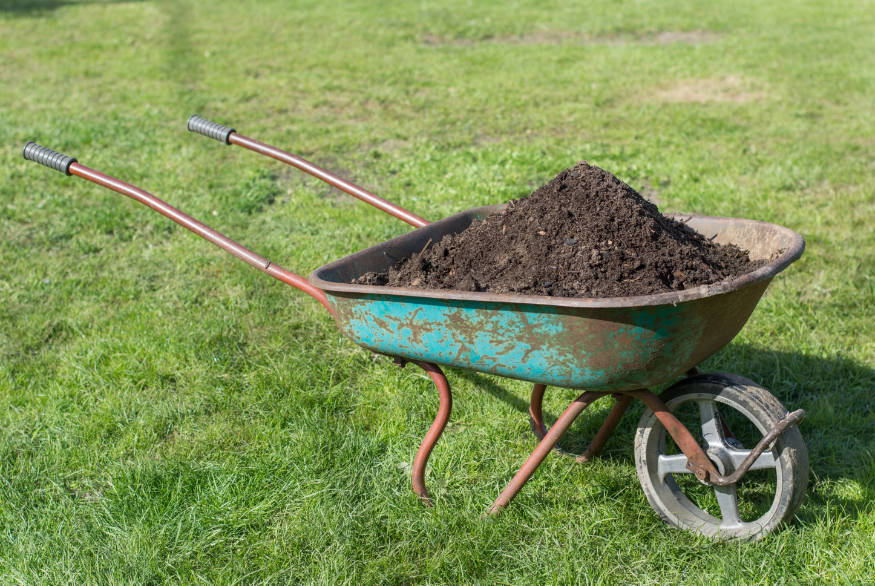
Another way to help your newly added seed to settle into your lawn is introducing another layer of dirt to the top of the grass. This very thin layer should include an enriched soil that nourishes your existing soil and provides a positive growing environment for new seed.
You can find soil that is made specifically for this purpose, which includes extra fertilizer and other ingredients to make it easier for grass to grow.
Just be sure that the new soil doesn’t blanket the existing grass enough to cause damage – that’s the opposite of our goal.
Step 5 – Spread Seeds
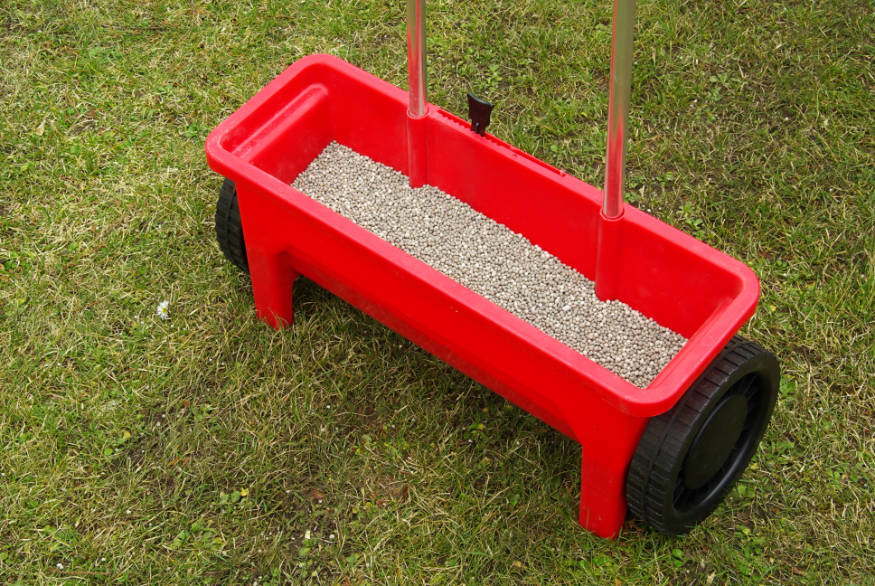
Before you spread the seeds, you have to make sure you’re choosing the right seeds for your lawn.
If you know the type of grass that is currently on your lawn, you can match those seeds and use them for the overseeding to thicken the coat.
Alternatively, you can choose another seed that is similar enough to the existing seed that it will be able to survive alongside it. This seed should be close to the same season (cool or warm) and not too far off in its needs for temperature and water.
For example: a mild cool-season seed and a mild warm-season seed can fit together nicely. But, the hot-season Bermuda grass and the cool-season Kentucky bluegrass have different needs that likely won’t cohabitate.
After the soil has been prepared and your lawn is ready to be seeded, it’s time to spread the seeds. If you’re overseeding your entire lawn, this is most likely easiest with the help of a seed spreader.
A spreader is a machine that disperses seeds from a hopper across your lawn as you move it around. By carefully following a pattern and following the directions with the spreader, you can evenly apply seed (and later fertilizer) to your whole yard. If you are only doing small patches of your lawn, hand-spreading the seeds is also viable as long as you ensure it is evenly dispersed.
Using a Slit Seeder
Alternatively, if you’re willing to buy or rent a slit seeder, slit seeding can be another effective way of dispersing seeds. As you move this tool, it creates a slit in the ground where seeds are dropped into from the hopper (similar to a seed spreader). This method allows seeds to penetrate deeper than they would be able to after your raking, but it requires a bigger investment into the equipment and more work to complete.
No matter the method you choose, it’s important to follow the seeding rate recommendations that come with your seed choice. When compared to reseeding, overseeding requires about half as much seed. Using too much seed can cause grass to fight over resources to grow, which can waste seed and stifle nearby healthy grass roots. Similarly, if you don’t use enough seed or don’t disperse it properly, you may still end up with a patchy lawn.
Step 6 – Fertilize
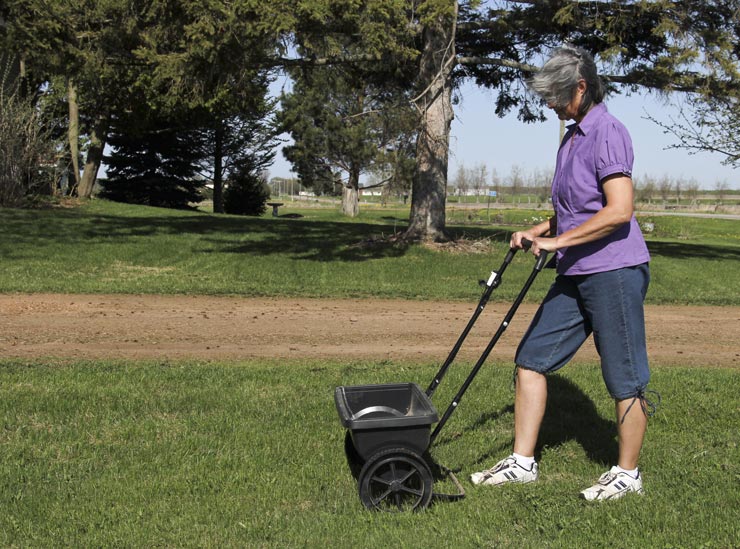
Fertilizer is an important part of fostering healthy growth for your new grass. It contains nutrients that help the seeds to germinate, and enriches the soil the grass will grow in (plus the soil below it after watering). Even if your new soil has fertilizer in it, it may still be worthwhile to fertilize your lawn with a fertilizer spreader.
To do this, look for a fertilizer that is rich in nitrogen, phosphorus, and potassium. These 3 nutrients help to create green, healthy, and resilient grass by aiding germination and growth. Once you have your preferred solution, load it into the fertilizer spreader and disperse it evenly throughout your yard.
Step 7 – Water
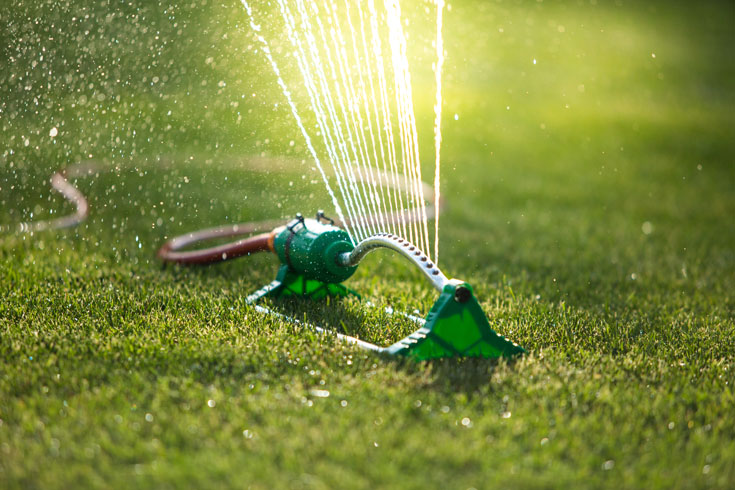
Watering your newly planted grass is perhaps the most important step. After everything is down on the lawn, give the entire lawn a healthy watering (up to about an inch of water). This helps to ensure that the seeds are hydrated properly and the soil is able to accept them for germination. Plus, it will help activate the fertilizer and keep it all from blowing away.
Continue to water 2 times per day for the first 2 weeks while the majority of germination occurs, and slowly reduce the amount over the next week before returning to your standard maintenance schedule. Newly planted grass needs a lot of water, so be sure to stay on schedule and if the grass seems dry, give it a drink.
Step 8 – Give It Time
Once the soil is prepped, seeds are down, grass is fertilized, and everything gets a drink of water, it’s time to rest.
Outside of requiring more watering than normal, you must allow up to 2 weeks for the seeds to begin germinating. During this time, avoid foot traffic or anything that may block sun, water, or oxygen from reaching the growing grass.
You should also hold off on mowing the grass until the entire lawn reaches a height that is about ½” higher than your usual grass height to ensure it has enough time to mature before the first mow.
As of the 3rd week, you should be able to resume normal activities and maintenance on your newer, thicker, and fuller lawn.
FAQs
What’s the Difference Between Reseeding and Overseeding?
Reseeding often requires you to dig up the grass and soil in problem areas (or the whole lawn) and replace it with new turf, effectively starting over when grass can’t be salvaged. Overseeding does not require a total restart. After a mow and some raking to open up the soil for seeding, your lawn should be ready for you to overseed without needing to get your hands too dirty.
Can I Overseed with a Different Type of Grass?
Yes! Overseeding with another type of grass over your existing lawn is a good way to increase the diversity of your lawn, which will make it healthier, more resilient, and more unique. Just be sure that you are not using two very different types of seasonal grasses – seeds on either side of the warm or cool spectrum will not share ideal growing conditions. However, a mild warm and mild cool seed combination can help keep your lawn thick throughout the year.
Can I Over-Overseed My Lawn?
Yes, it is possible to use too much seed when overseeding your lawn. When there is existing turf, there are less resources (space, nutrients, water, and oxygen) available to each blade of grass. If you use too much seed, you can cause grass to fight over resources which won’t lead to the full, lush, and green grass you’re looking for.
Image Credits
- Before and after images: source